BBC’s The Hunt – The African wildlife and film location secrets revealed…
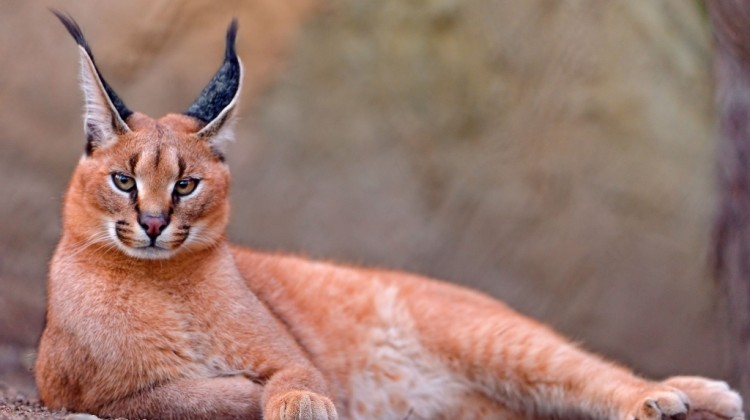
Many of the predators featured in the BBC’s “The Hunt” documentary are seen in abundance in various locations in Africa. Over 100 different film locations were used and we illustrate here a few firm safari favourite wildlife areas, as well as some lesser known but exclusive safari destinations.
Cheetah – Masai Mara, Kenya
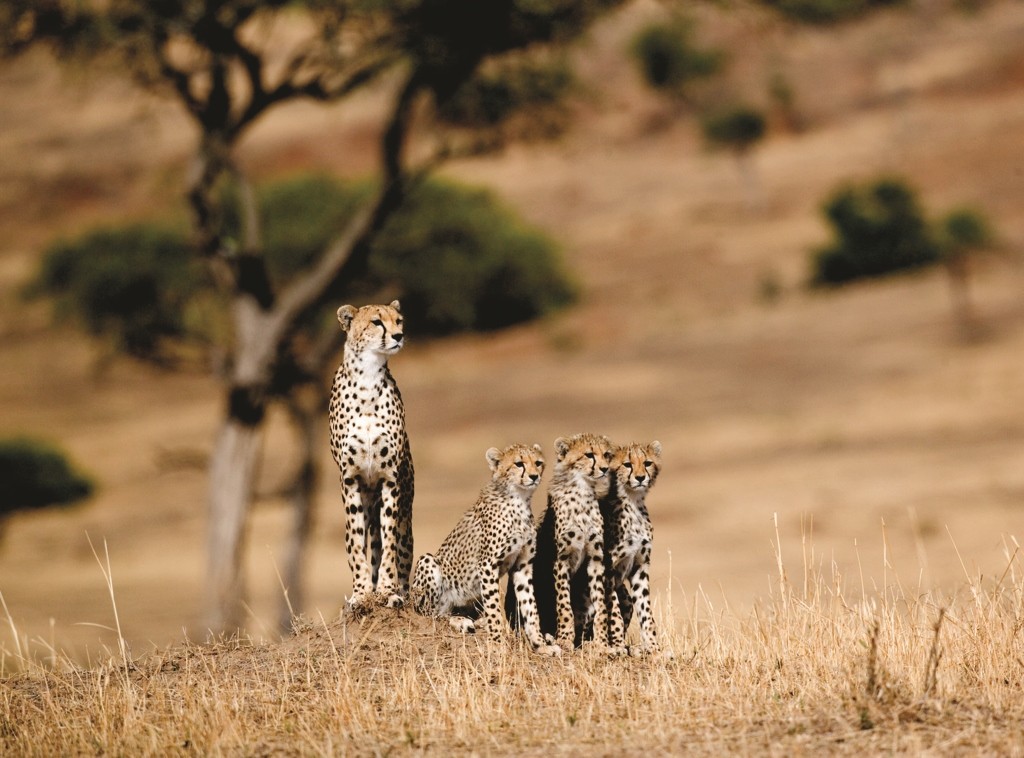
Cheetah and three cubs, Masai Mara, Kenya
Touch down in Kenya, in our opinion one of the best places anywhere to spot Africa’s Big 5. It’s also home to the Masai Mara – Africa’s most prized safari location – where you can witness one of the world’s greatest wildlife spectacles, the wildebeest migration. Cheetah are regularly spotted here and as they are sight hunters they’re easy to spot sitting on termite mounds, or occasionally safari vehicle bonnets, as they look out for prey. Cheetah generally hunt alone and like dry, open grasslands where they can pick up speed to out-run their prey. They are diurnal hunters, hunting from daybreak until dusk, stalking stealthily before launching an attack. To keep their prey they have to either eat it immediately or drag it to cover. Strengths – Can out-run any small – medium sized antelope, opportunist, and can run 60mph /100 kph in short bursts of 10 seconds. Weaknesses – Can be killed by larger animals, thus must yield to any conflict over prey and cannot attack larger prey like wildebeest. Photo Tip: Situate yourself near a termite mound or a high point as cheetahs stalk prey from high vantage points. Fact: Cheetahs only need to drink water every three to four days
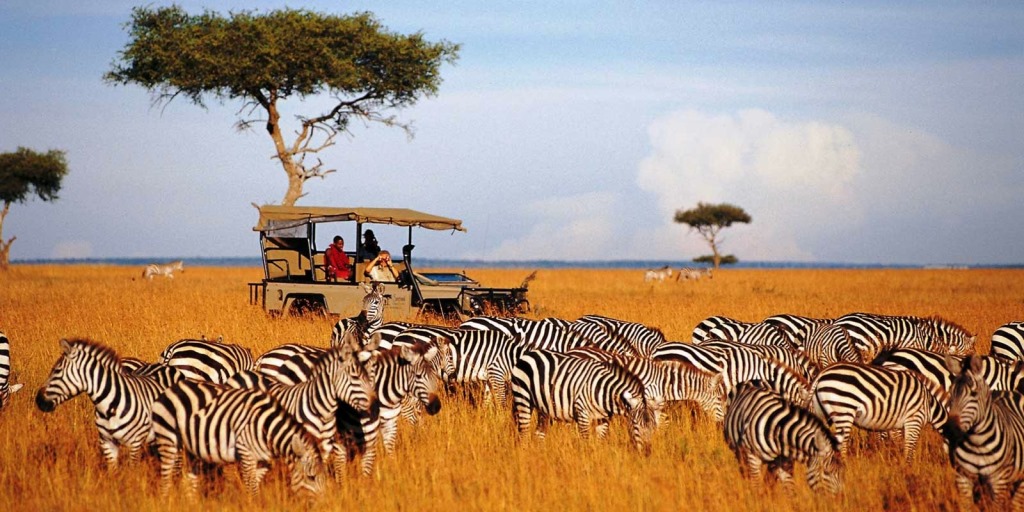
Incredible game drives Masai Mara, Kenya. Image credit Saruni Camp
Wild dog – South Luangwa, Zambia
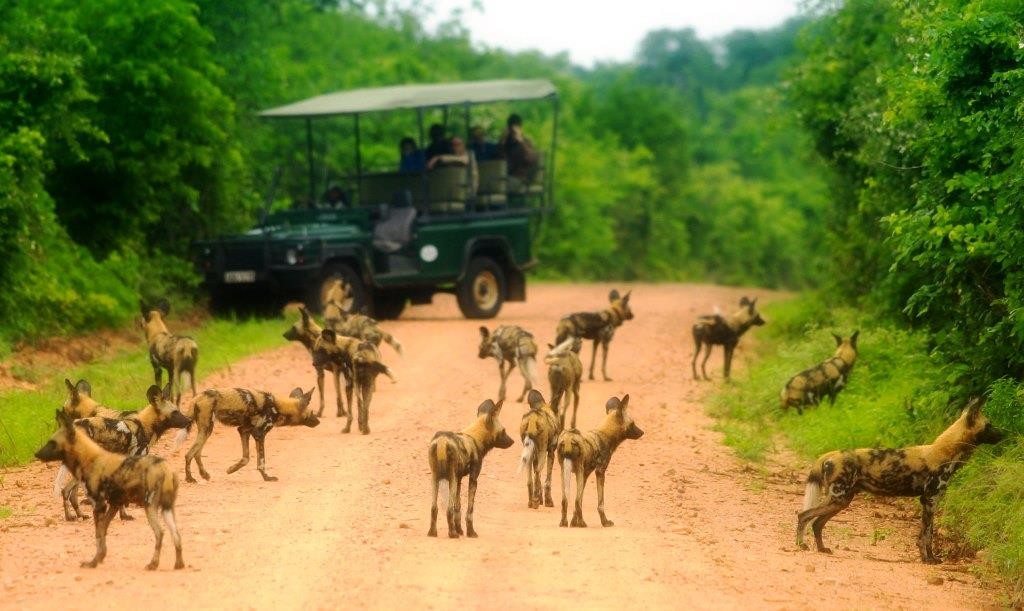
Wild dog pack, The Bushcamp Company, Zambia
The remote wilderness areas of Zambia present an unparalleled opportunity to experience Africa in all its vastness. The Lower Zambezi and South Luangwa National Parks are probably the most famous wildlife areas, with leopard and wild dog among the animal highlights. Great for walking safaris, canoe safaris and with all sorts of activities around Victoria Falls it’s a wonderfully varied safari destination. The African wild dog, also called Cape hunting dog or painted dog, typically roams the open plains and sparse woodlands of sub-Saharan Africa. They are very social animals and live in packs that are usually dominated by a monogamous breeding pair. Family members have been known to share food and to assist weak or ill members. African wild dogs hunt in formidable, cooperative packs of 6 to 20 (or more), though larger packs were common before the dogs became endangered. They hunt antelope and will also tackle much larger prey, such as wildebeests, particularly if their quarry is ill or injured. The dogs supplement their diet with rodents and birds. Read our 5 best places to view African wild dog. Strengths – Can tackle medium sized antelope and weak wildebeest, hunting in packs, extremely successful and ferocious cooperative hunters. Their hunting success rate is one of the highest among any of Africa’s predators. Weaknesses – African hunting dogs are endangered, the 2nd most endangered of African large carnivores after the Ethiopian wolf. They are faced with shrinking room to roam in their African home. They are also quite susceptible to diseases spread by domestic animals. Photo Tip: They are most active early mornings and late afternoons. If you find them resting during the day they will most likely stay there until the temperatures start to drop. Fact: The female has a litter of 2 to 20 pups, which are cared for by the entire pack.
Lion – Okavango Delta – Botswana
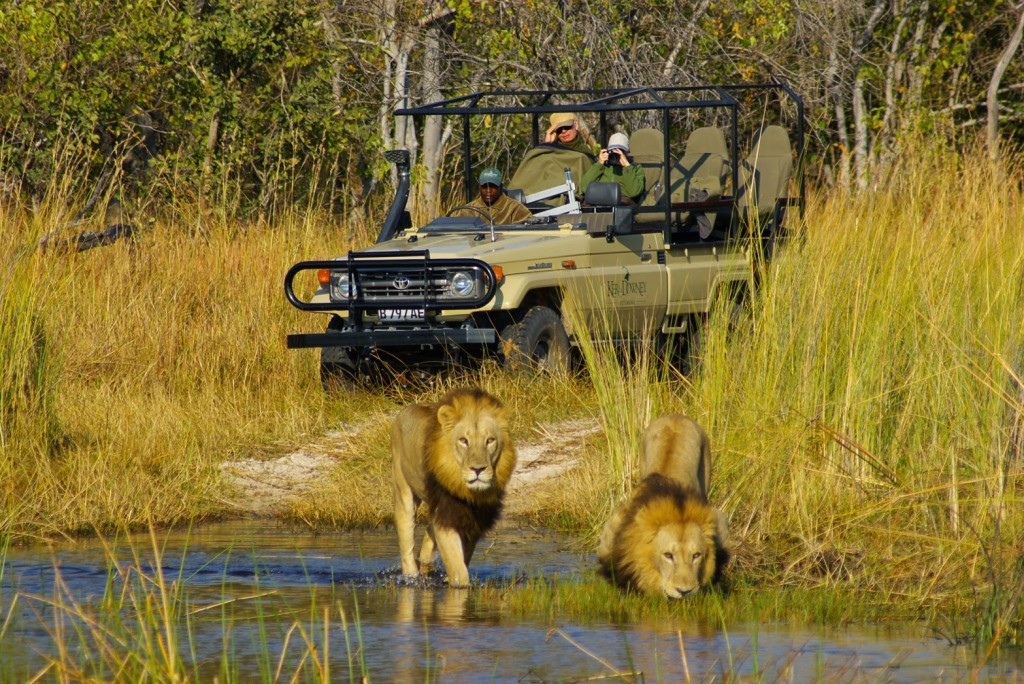
Male lions on a game drive, Okavango Delta, Botswana
The Okavango Delta is the world’s largest inland delta, where one of Africa’s greatest rivers floods into the Kalahari desert, pooling in a network of channels and lakes, creating new islands and rewriting the landscape each and every year. Best of all, the river floods during the Okavango’s dry season, at a time when the Kalahari’s game is roaming the desert in an all-consuming search for water. This is a safari highlight for anyone interested in Africa and its wildlife. Here you’ll find plenty of elephant, seasonally migrating zebra and healthy populations of lion. Female lions are the pride’s primary hunters. They often work together to prey upon antelope, zebra, wildebeest, and other plains grazing species. Many of these animals are faster than lions, so teamwork pays off. After a kill, the group effort often degenerates to squabbling over the spoils, with cubs at the bottom of the pecking order. Young lions do not help to hunt until they are about a year old. Lions will hunt alone if the opportunity presents itself, and they also steal from hyena or wild dogs. Lions tend to hunt mostly by night or in the early mornings, and for much of the rest of the time are the embodiment of laziness. However, being opportunists they’ll hunt whenever the chance arises and that could be the middle of the hottest day. Consequently lions have developed two main hunting methods. The first is a version of grandmother’s footsteps, in which the lion stalks from cover to cover with a final burst of speed at the end. (If spotted the lion will sit up and stare nonchalantly into the distance.) The second method is to find a bush close to something your prey needs – usually water – climb in and wait. This has the great advantage that the lion can catch up on sleep whilst technically “out hunting”. Strengths – Can tackle large prey, team players, can bully other predators and steal their prey. Weaknesses – Slow compared to their prey, opportunists, the element of surprise is key for success. Photo Tip: “Lions are wild animals that will not always be comfortable close to humans and vehicles, and so some of the most natural moments will happen from a distance therefore a long range lens is best. ” – Beverley Joubert Fact: They’re incredibly good at hiding and phenomenally patient.
Caracal – Madikwe & Kalahari – South Africa
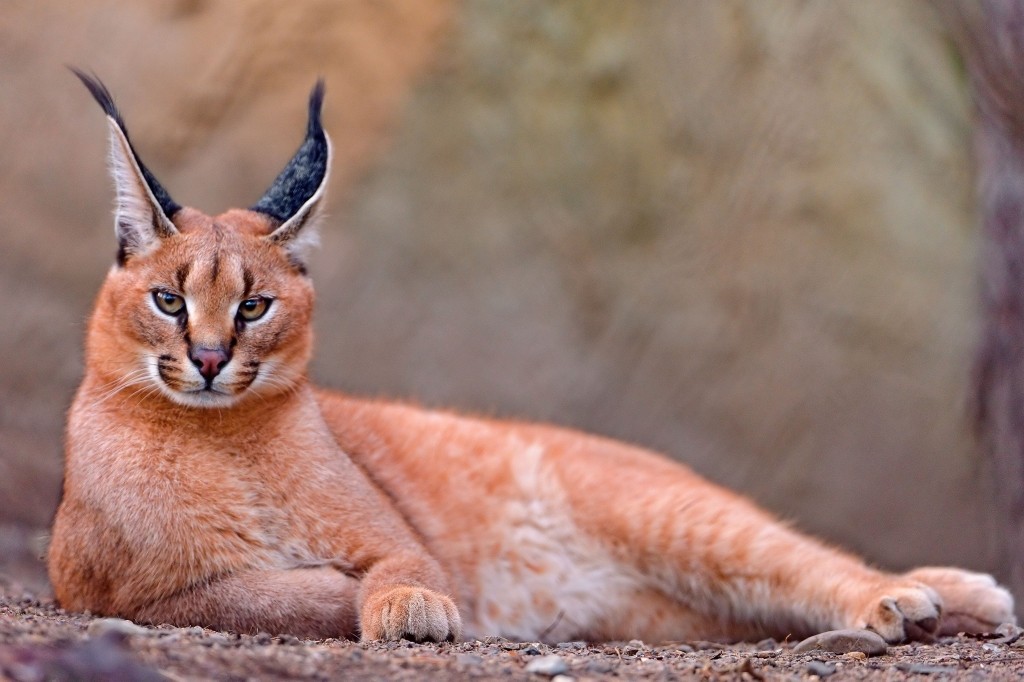
Caracal
Madikwe is where the lowveld bushveld gives way to the Kalahari thornveld in a dramatic volcanic landscape of inselbergs, plains and riverine valleys. Apart from the Big 5 there’s lots more to see. As one of Africa’s largest game reserves it has space to support wild dog as well as 66 mammal species and more than 300 bird species. It provides the perfect habitat for caracal who favour the drier savannah and woodland regions of sub-Saharan Africa, and prefer the more scrubby, arid habitats. Caracal are nocturnal and normally solitary hunters, although they are occasionally spotted in pairs. Apart from a mother with kittens, social interactions usually limited to mating. Caracal can purr, hiss, snarl, bark and growl. Caracal breed throughout the year and females will have from one to six kittens per litter; with the kittens becoming independent at about nine or ten months. The young then travel considerable distances to find and claim their own new territory. Females stay in one place to defend the territory, while males roam over larger areas. The caracal is a fearsome predator with strong and lengthy hind legs, remarkable speed and agility, allowing it to tackle prey up to three times its size. During the dry season, when birds flock to water holes, caracals have been seen ‘exploding’ 3m into the air like coiled springs to catch doves or sandgrouse in their paws, sometimes even batting down two at a time. Strengths – The fastest cat of its size, the caracal is able to run down prey such as small antelopes and hares. Can leap up to 3m high to catch birds. Weaknesses – They love lamb and as a consequence many are poisoned by sheep farmers in South Africa. Photo Tip: Known as ‘ghosts’ they are fiendishly hard to spot. Most photographic and film studies of caracals have had to rely on tame or habituated individuals, and yet, when you do see one, it can act as if it’s always been there and you’re the fool for not spotting it earlier. Fact: The caracal’s impressive leaping ability once led to the species being trained to hunt game birds for the Persian and Indian royalty.
Spotted Hyena – Etosha – Namibia
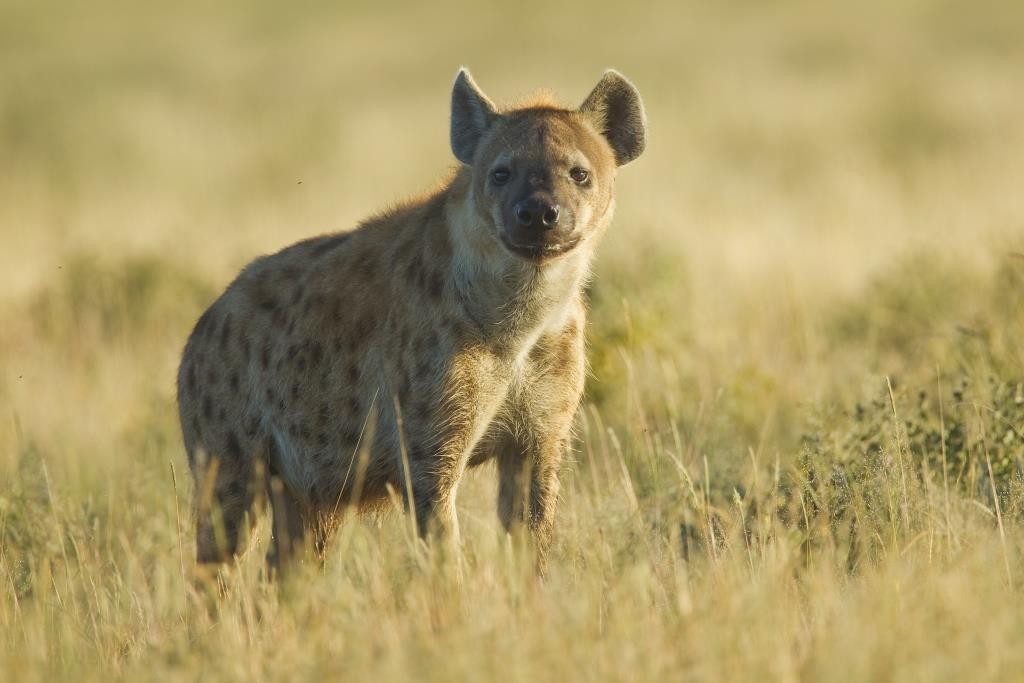
Spotted Hyena, Etosha, Namibia
Consisting of saline desert, savannah and woodlands, the Etosha National Park is one of the largest game reserves in Africa. Its definitive feature is the Etosha Pan, a vast, shallow depression. For the greater part of the year the pan is a bleak expanse of white cracked mud which shimmers with mirages on most days. Seeing vast herds of game against this eerie backdrop, makes game viewing in Etosha a truly unique experience. Spotted hyenas are the largest of three hyena species (brown, and striped hyena, are the other two). Although hyenas appear similar to dogs, they are actually more closely related to cats. Spotted hyena are found throughout much of Africa living together in large female-led groups called clans that may include up 80 individuals. Strengths – Spotted hyenas have good hearing and sharp eyesight at night. They are fast and can run for long distances without tiring. Packs work together effectively to isolate a herd animal, sometimes one that is ill or infirm, and pursue it to the death. Weaknesses – The victors often squabble over the spoils, either among themselves or with other powerful animals like lion. Photo Tip: Always try and capture the eye of the animal, and try and get even lighting on the face to capture the expression fully. Fact: Spotted hyenas are quite vocal and make a wide variety of sounds, including the “laughing” that has long been associated with their name.
Chimpanzee – Kibale Forest – Uganda
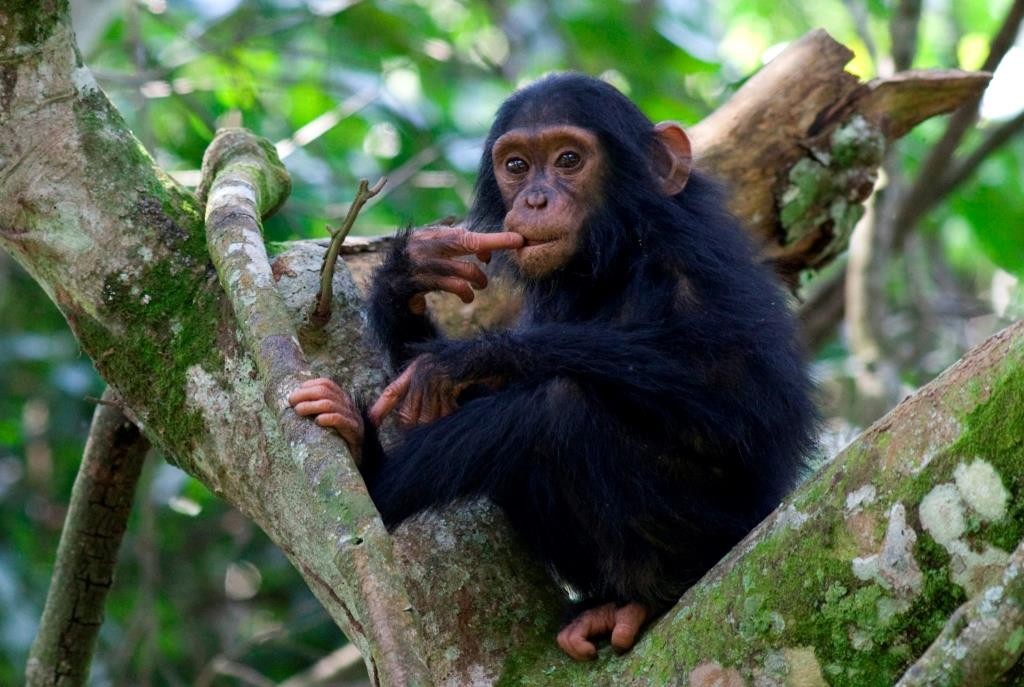
Baby chimpanzee, Image credit Volcanoes Safaris
For close contact with chimps it’s hard to beat Kibale Forest National Park. The park links with the Queen Elizabeth National to make a huge wildlife corridor through the heart of Uganda and a few days here is a great addition to any Uganda safari. Home to 13 primate species, it’s the best park in Africa for primates in terms of both density and diversity. There are some 1,450 resident chimps here, the largest population in Uganda, which can be viewed on private tracking expeditions as well as on a ‘chimpanzee habituation experience’, where (at certain times of year) visitors can accompany Kibale’s researchers and chimp habituators as they go about their daily tasks. Chimpanzees are fascinating and immensely rewarding animals to watch. Their interactions, communications, mobility and intelligence are all readily visible, and proof of our kinship with this amazing family of beautiful animals. Strengths: Chimpanzees hunt in small groups and can use one chimp as a decoy to deliberately confuse and drive prey into a trap. They hunt red colobus monkeys, bushbuck and young bushpig. Weaknesses: Although chimps and humans are closely related, the apes have suffered much at human hands. These great apes are endangered and still threatened by bushmeat hunters and habitat destruction. Photo Tip: The steamy environment can play havoc with your lens. In case of lens condensation put your lens in a warm, dry place or in direct sunlight until the moisture clears. Store your lenses in a camera bag with silica gel packs. Flash photography is not allowed, therefore set your camera for low light conditions. Whichever way you choose to capture photos on your safari holiday, we’re happy to help with advice. We’ve got keen photographers among the team at Aardvark Safaris for the relatively easy stuff, and are pleased to be working with David Murray, a professional photographer based somewhere between the UK and Africa, for the tougher, geeky questions. We can suggest camps with hides, the best lodges for private vehicles, specialist photographic holidays, or simply match you with guides who understand photography. It’s now down to you:give us a call or drop us an email and we will do the rest. Explore ‘The Hunt’ Inspired Safari – 7 days in some of the best wildlife and predator habitats in Northern Tanzania. Read about Meeting Malaika; Cheetah In The BBC ‘The Hunt’ Series Q&A on finding and photographing Malaika and her cubs in the Masai Mara
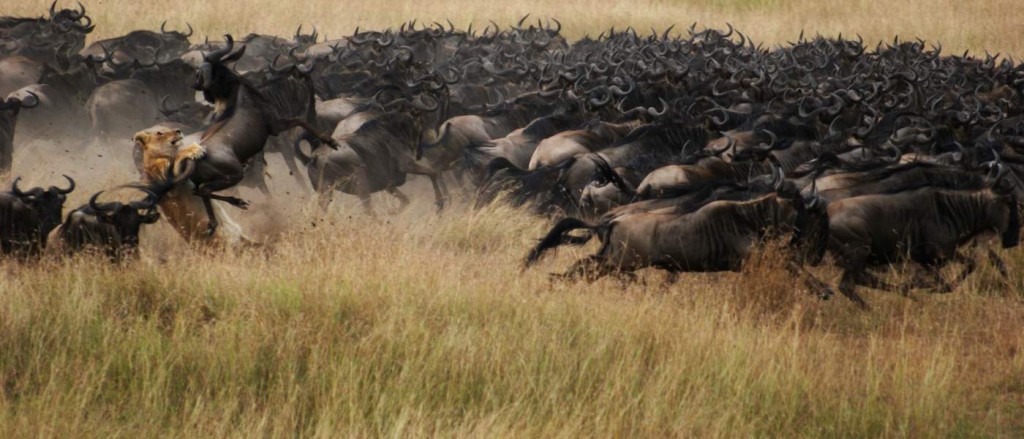
Leave a Reply